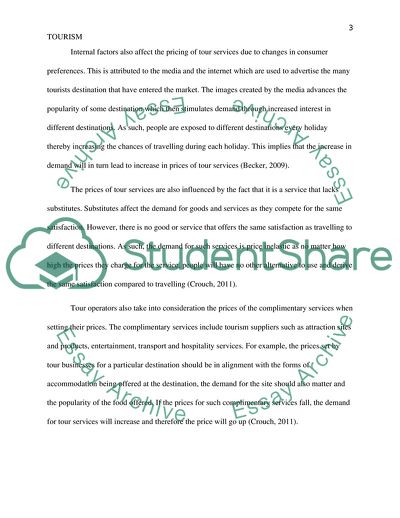Cite this document
(Economic Factors that Tour Operators Take Into Account in Setting the Price of their Package Holidays Essay Example | Topics and Well Written Essays - 1250 words, n.d.)
Economic Factors that Tour Operators Take Into Account in Setting the Price of their Package Holidays Essay Example | Topics and Well Written Essays - 1250 words. https://studentshare.org/tourism/1860635-what-economic-factors-do-tour-operators-take-into-account-in-setting-the-price-of-their-package-holidays
Economic Factors that Tour Operators Take Into Account in Setting the Price of their Package Holidays Essay Example | Topics and Well Written Essays - 1250 words. https://studentshare.org/tourism/1860635-what-economic-factors-do-tour-operators-take-into-account-in-setting-the-price-of-their-package-holidays
(Economic Factors That Tour Operators Take Into Account in Setting the Price of Their Package Holidays Essay Example | Topics and Well Written Essays - 1250 Words)
Economic Factors That Tour Operators Take Into Account in Setting the Price of Their Package Holidays Essay Example | Topics and Well Written Essays - 1250 Words. https://studentshare.org/tourism/1860635-what-economic-factors-do-tour-operators-take-into-account-in-setting-the-price-of-their-package-holidays.
Economic Factors That Tour Operators Take Into Account in Setting the Price of Their Package Holidays Essay Example | Topics and Well Written Essays - 1250 Words. https://studentshare.org/tourism/1860635-what-economic-factors-do-tour-operators-take-into-account-in-setting-the-price-of-their-package-holidays.
“Economic Factors That Tour Operators Take Into Account in Setting the Price of Their Package Holidays Essay Example | Topics and Well Written Essays - 1250 Words”. https://studentshare.org/tourism/1860635-what-economic-factors-do-tour-operators-take-into-account-in-setting-the-price-of-their-package-holidays.


